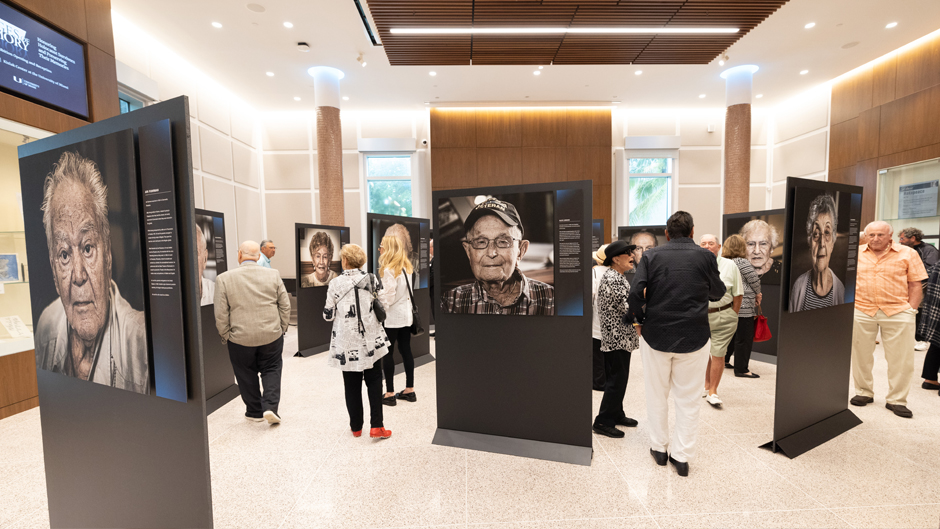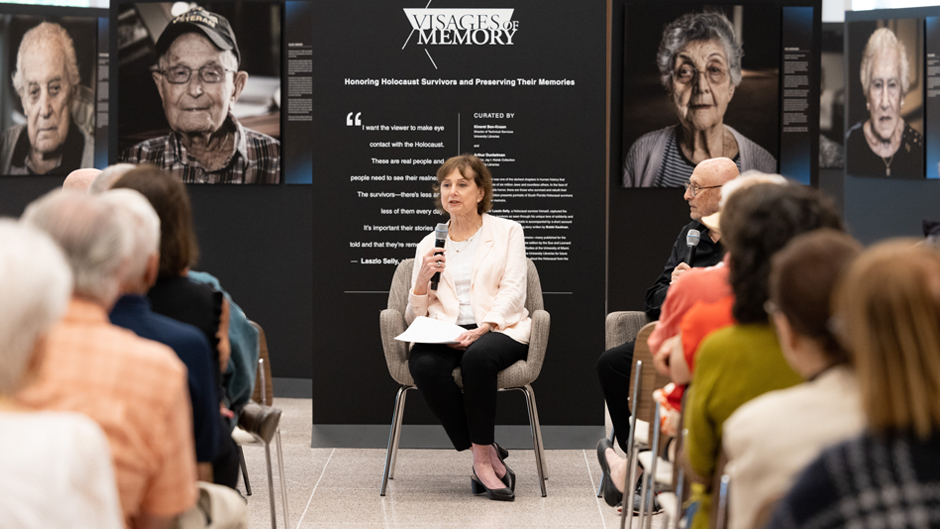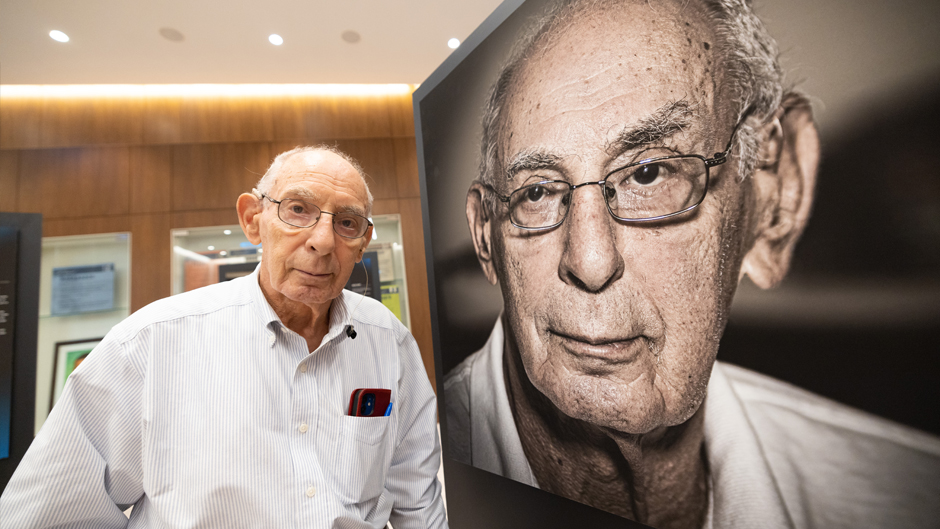When Peter Tarjan was seven years old in the spring of 1944, living in his home in Budapest, Hungary, his father was drafted into forced labor and sent to German territory. He never saw his father again after December, 1945.
Tarjan was able to leave a children's shelter and then travel on foot to a Swiss protected house where friends hid him until liberation. His mother was taken to several concentration camps and as of February 1945, she was still alive. But he never saw her again.
Tarjan eventually emigrated to the United States as a Hungarian refugee in 1956 on a Navy ship. He studied biomedical engineering and became a professor at the University of Miami, retiring in 2010.
Last week Tarjan, now 86, was one of several Holocaust survivors who attended the opening of “Visages of Memory,” an exhibit at the Kislak Center at the University of Miami that highlights the lives of Holocaust survivors from South Florida. The oldest survivor in the audience was 99-year-old Jack Waksal.
“Not to forget is the issue of this exhibit…never forget,” Tarjan said. “These stories are as genuine as one can find.”
The Holocaust was the systematic, state-sponsored persecution and murder of six million Jews between 1933 and 1949 in Nazi Germany. Many survivors settled in South Florida, but by now many of them have passed away. Those who remain are in their 80s or 90s, organizers said.
Many in attendance—which included children of survivors—brought up the importance of showing this exhibit at a time of increased antisemitic violence in Florida and across the nation.
The exhibit features 29 large photographs of Holocaust survivors, including those of Tarjan and Waksal, taken by photographer Laszlo Selly, a fellow survivor.
Each portrait includes a brief account of the survivor’s life story, written by author Bobbi Kaufman. The exhibit was curated by Kineret Ben-Knaan, director of technical services at University Libraries and Arthur Dunkelman, curator of the Jay I. Kislak Collection at University Libraries. It will be on display through July 21.

Jeffrey Duerk, executive vice president for academic affairs and provost, welcomed the group and thanked the creators of the project.
“On display before you is an exhibition of portraits and memories of those who survived the darkest times of modern history…and who rebuilt their lives here in South Florida,” he said.
Duerk also highlighted the display of 15 Holocaust survivors’ biographies that Kaufman wrote—many published for the first time, and others republished as a new edition by the Sue and Leonard Miller Center for Contemporary Judaic Studies.
“All of these stories have been donated to the University of Miami so that the students can learn from these stories—from the perspective of the survivors themselves, not from historical texts,” Duerk added.
Cristina Favretto, head of Special Collections, and Haim Shaked, professor of international studies and director of the Miller Center for Contemporary Judaic Studies, also addressed the audience.
A somber moment took place when Rachelle Nelson, cantor emerita at Temple Beth Am and cantor-in-residence at Temple Israel, sang “Ani Ma'amin,” a religious hymn that many Jews sang as they were led to the gas chambers in concentration camps.
Afterward, Dunkelman moderated a discussion between Selly and Kaufman on the importance of gathering these personal testimonies.
Selly said he hoped the pictures will give viewers “a glimpse underneath the makeup of these people. They may have lost their youthful beauty, but their dignity is intact. These people are heroes. These people should never be forgotten. These people have seen evil. They looked at it in the eye, and they triumphed.”

Kaufman, who began her work with survivors with the University of Southern California Shoah Foundation project—founded by film director Steven Spielberg—said that she often spent 10 to 15 hours over several months with each survivor listening to their personal stories.
“I did not edit [the testimonies] because I learned that if you edit the testimony, it makes them not viable. It is no longer honest testimony,” she said.
Kaufman said that as she heard dozens of harrowing accounts, she reminded herself to avoid becoming emotional.
“The emotion and caring about the person would come later,” she said. “But as I am taking the testimony, I am working.”
As Selly took the portraits of the survivors, he was surprised to find that many of his subjects would smile, even though he had asked them not to.
One woman told him: “I cannot help but smile. I am alive and I am happy.”

